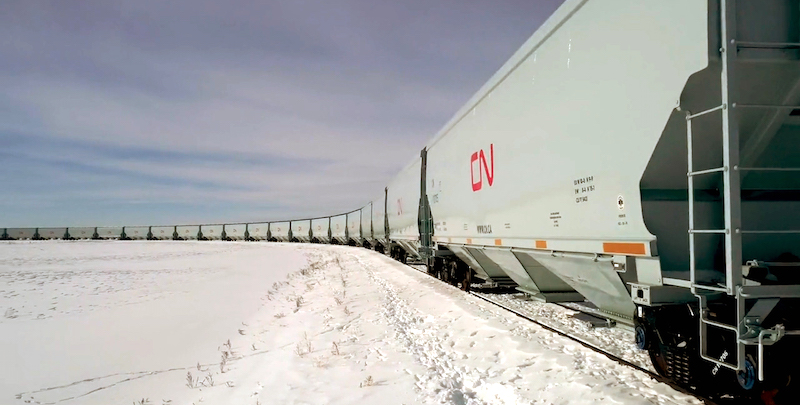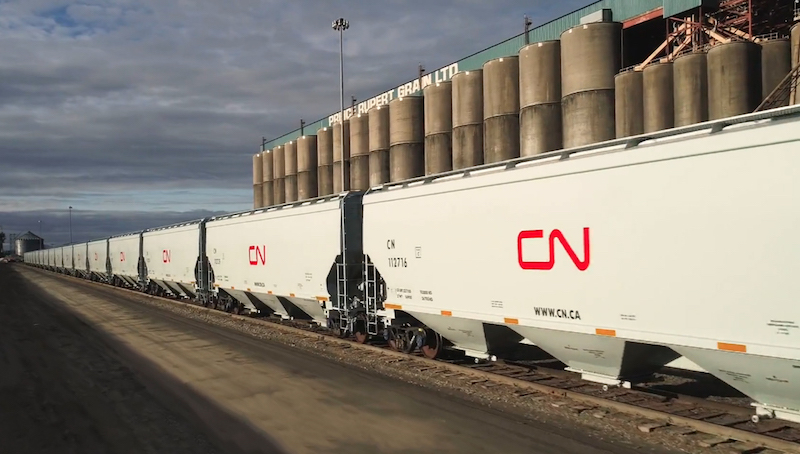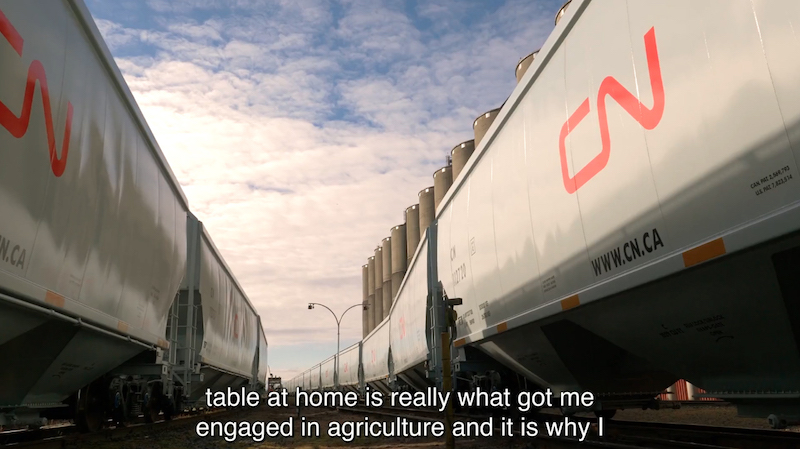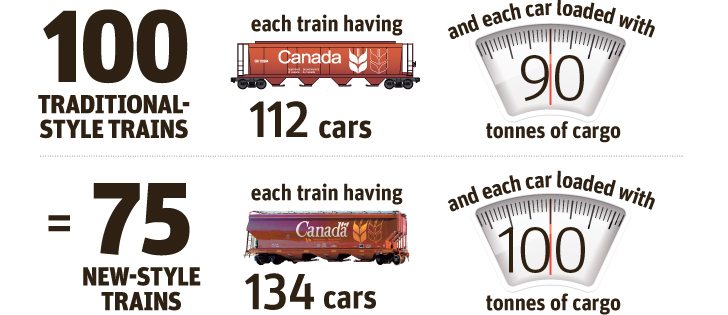
Train Addiction Help Line: 1.866.840.7777
NARC - HO Scale - 3 Bay Hopper - NSC 5431 cuft - Canadian National (CN)(Gray/Black Lettering/ Red CN Logo)(Special Features) - Single Car - Road Numbers 1-12 Available - Version 5 (SKU 11-36001007)
Available On: December 1, 2023

New CN Photos: From Farm to table

As required by the Government of Canada, Team CN has put in place a comprehensive, robust and focused action plan to meet the anticipated volume of grain expected to be moved in the crop year. The objective is clear. It is the effective, efficient and timely movement of grain throughout the coming crop year.
To develop its plan, CN collaborates with key stakeholders, including producers, seeking their views and input. The measures reflect extensive consultations with grain producers, grain-handling companies, customers and Government officials. The foundation for the measures is Agriculture and Agri-Food Canada’s projections for the crop year.
To Download your copy of the CN Grain Plan Click here








"The Thought of taking grain, oil seeds, pulses from western Canada, from my friend’s farms, shipping them onto a vessel and putting them onto somebody’s dinner plates on their table at home is really what got me engaged in agriculture." Dean McQueen VP- Merchandising and Transportation - Viterra
Check out the new video by CN From Farm to Table: CN's New Hopper Fleet
Dear Customers:
for some time now we have been working on our next car to produce. That car will be the 5431 cu ft National Steel Car 3 Bay Hopper.
This new car will be the replacement car for all the Cylindrical Hoppers that wher ebuilt in the 1970's, 80's and 90's in Canada to transport Canadian Grains.
Here is some background information on the new car:
Grain trains: New railcar models are bigger, and haul more

1. They’re lighter
The new generation of grain train is not your daddy’s grain train.
There are many differences, but two of the biggest changes are:
- Railways are running longer trains.
- New hopper cars can carry more grain.
Eventually Canada’s government owned fleet of grain hopper cars will be replaced, and when they are, crop movement will become more efficient.
That is because modern grain hopper cars can carry more grain in shorter, lighter cars.
The standard hopper car that was built decades ago can carry a volume of 4,550 cubic feet, weighs 62,000 lb. and is about 60 feet long.
Cars built today can carry a volume of 5,431 cubic feet, but weigh 2,000 lb. less and are more than four feet shorter.
This means that each modern car can carry about 10 tonnes more grain.
And because they are shorter, there can be more cars on each train.
The result is that a train pulling all new grain cars would be able to move about 20 percent more grain than a train of the same length pulling the old cars.
The same number of train engines would be used, so the amount of fuel used to transport each tonne of grain would fall.
The efficient use of locomotives is also behind the move to longer trains.

In the concrete elevator building boom of the 1990s, the state of the art was to have a 100-car siding to accommodate full trains.
The standard size grain train in Canada in recent years was 112 cars.
But Keith Creel, Canadian Pacific Railway president and chief operating officer, says the day of the 112-car train is dead and the new norm will be 134 cars.
The new generation of elevators built today has loop tracks able to accommodate and quickly load 134 cars.
And with investment in new and expanded rail sidings, the railways say they are able to increase speeds by 25 to 30 percent in certain corridors.
- Body 1, Type 2 End (Low Brace End with Vertical Brake Wheel House, with rectangle cross brace)Vertical Face on Bolster
- Low Mounted Air Tank
- Trough Hatch
- Toggle Lock (Outlet Gate)
- 11 Running Board Supports Riveted Outlet Gate
Features of the model as appropriate per prototype:
- Meticulously researched and designed
- 2 different running boards (11 or 17 supports) – etched brass
- Etched Brass Crossover Platforms (with individually applied supports)
- 5 different Ends (bracing variations)
- 2 Different Outlet Gates (Toggle Lock and Spiral Cog)
- Investment castings for capstans (end of gates)
- 2 Different Hand Brakes (conventional and “High Power” Ellcon-National
- 2 Different Reservoir Positions (low for truck mounted cylinders and high for body mounted cylinders)
- External brake Rod on cares with body mounted brakes cylinders (including levers)
- 3 Different styles of trough hatches (smooth, slash, “V”)
- Kadee # 58 semi-scale couplers
- Coupler Cut Bars
- 2 Bolster/Jack Pad Styles (flat and sloped faces)
- North American Railcar High-Performance Low Friction Barber S-2-E 100-ton trucks with semi-scale 36” wheels
There are 12 road numbers available in this release, change quantity in cart to order more than a single car, road numbers are:
CN 113700-114849 (with short outlet gates) 2018 to present / trough 11 welded panels, 11 running board supports, squared hatch, type 1 jack pad, type 1 tapered end - Version 5
- 01 / CN 113709
- 02 / CN 113740
- 03 / CN 113756
- 04 / CN 113767
- 05 / CN 113773
- 06 / CN 113781
- 07 / CN 113800
- 08 / CN 113807
- 09 / CN 113815
- 10 / CN 113836
- 11 / CN 113849
- 12 / CN 113865

$49.95 US
